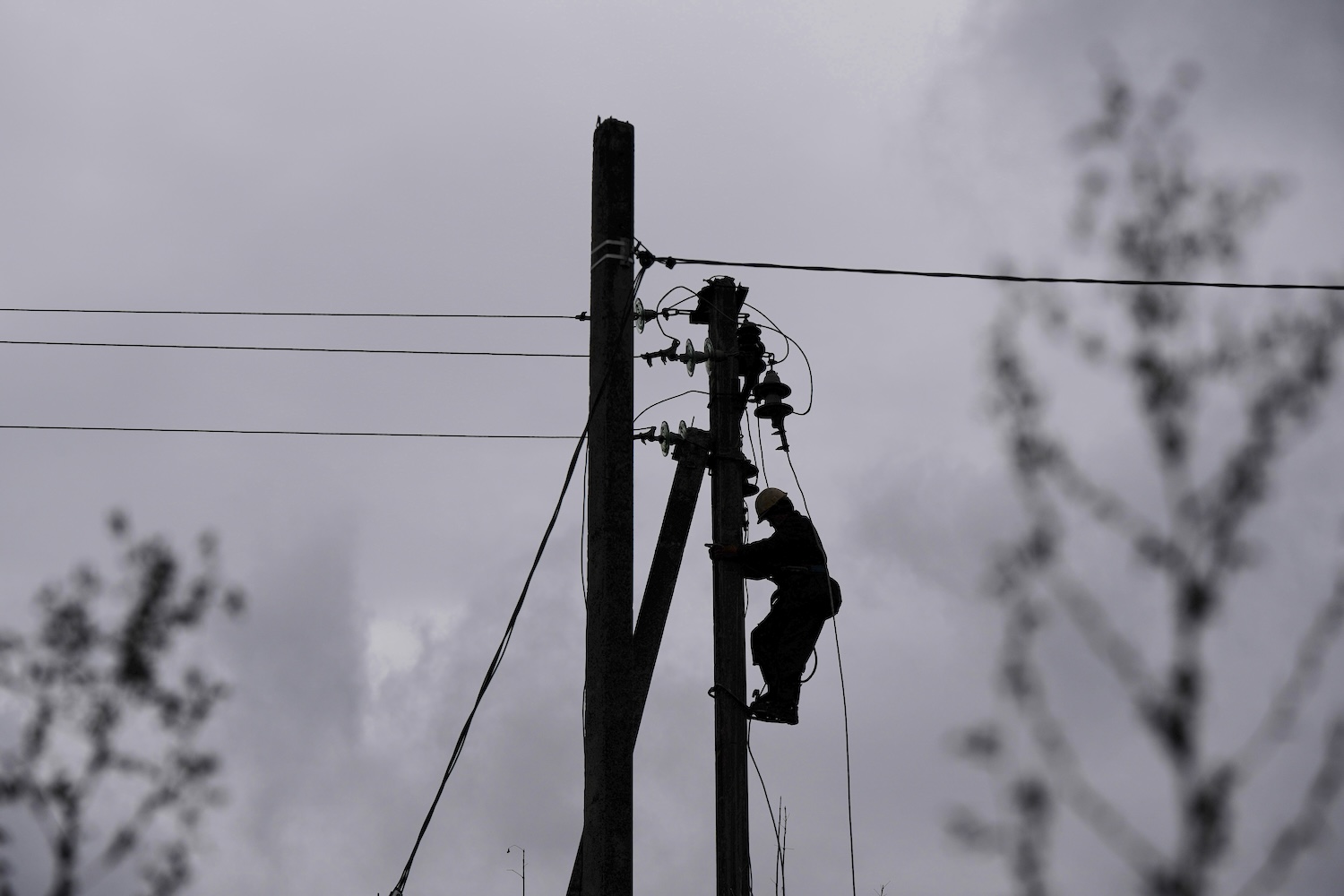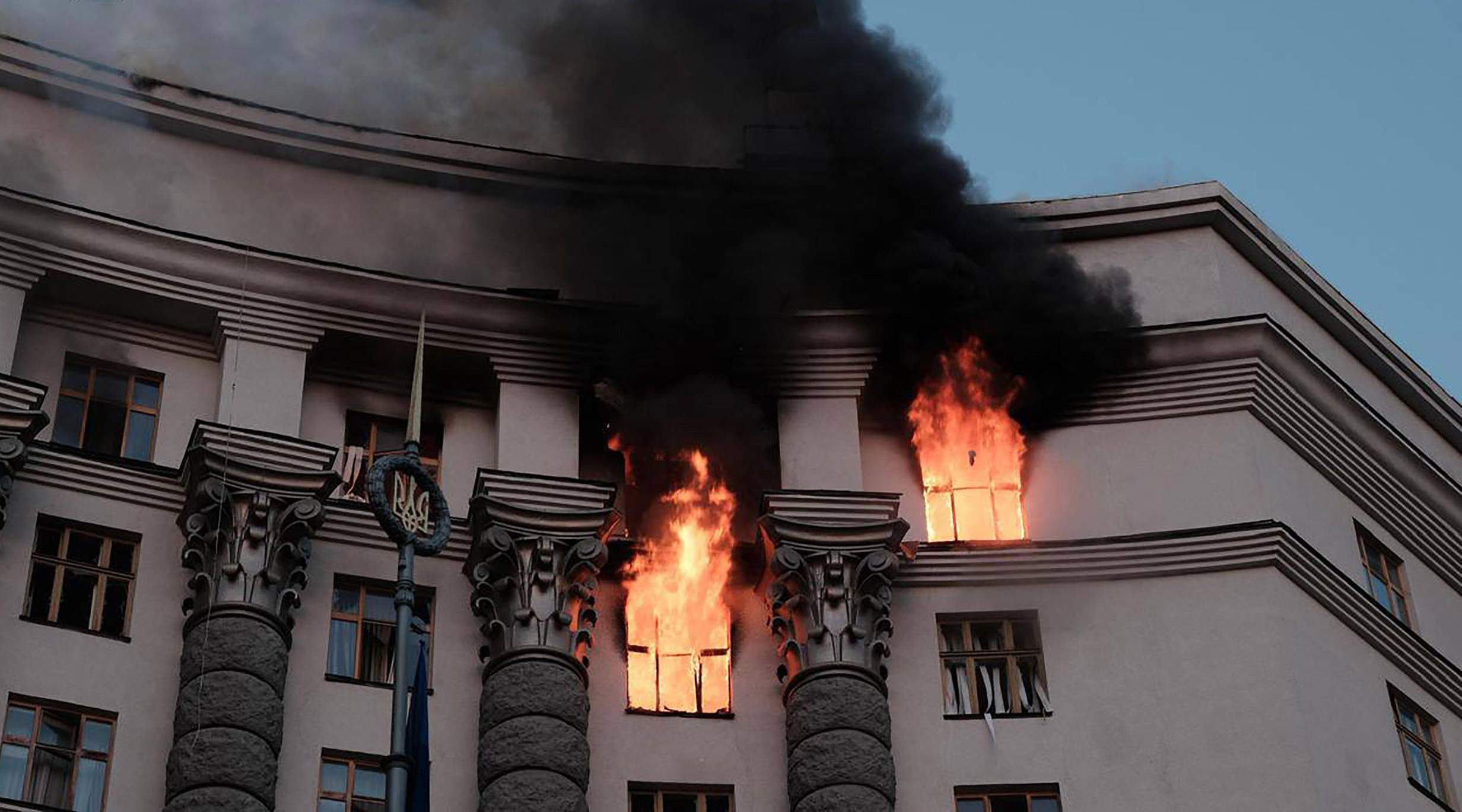Support our mission to provide fearless stories about and outside the media system
Read our
Digital / Print Editions
Packed with exclusive investigations, analysis, and features
Russian forces renewed their campaign to knock Ukraine’s interior lights out on Monday, striking at the heart of civilian life in the northern city of Chernihiv and the eastern hub of Kharkiv with guided aerial bombs aimed at combined heat and power (CHP) plants.
The blasts caused partial power outages in both cities, underscoring Moscow’s evolving strategy of crippling the country’s energy grid as temperatures across Ukraine begin to drop.
In Chernihiv, a northern region already reeling from months of intermittent strikes and shelling, power was lost completely in the early hours of the morning, causing a city-wide blackout. According to the Ministry of Energy of Ukraine, it has been unable to carry out necessary repairs on Tuesday morning as Russian long-range loitering drones “continuously circle over the damaged facilities, making repair work impossible and deliberately prolonging the humanitarian crisis.”
City officials have urged residents to stock up on water while critical infrastructure has been switched to generator power. Officials in Kyiv have reported that Slavutych, a Chernihiv region city built to house workers after the 1986 Chernobyl disaster, also suffered power outages as a result of the strike.
Earlier this month, the Chernobyl Nuclear Power Plant experienced an energy blackout lasting several hours after a power substation in Slavutych was hit in a Russian attack, leaving the New Safe Confinement facility, which isolates the destroyed fourth power unit of the decommissioned plant, without power. At the time, Ukrainian President Volodymyr Zelenskyy accused Moscow of attempting to create the risk of a nuclear incident, writing on Telegram: “The Russians could not have been unaware that a strike on facilities in Slavutych would have such consequences for Chornobyl.”
Meanwhile, in the northeast of Ukraine, the city administration of Kharkiv announced emergency power outages will come into effect after Russian forces launched six guided aerial bombs at the city, primarily targeting an industrial region of the city. Local officials in Kharkiv reported that the most recent attack used updated guided aerial bombs, capable of longer glide ranges, while last week the city of Lozova in the Kharkiv region was hit with a new rocket-powered guided aerial bomb.
What distinguishes this cycle of attacks from previous winter campaigns is the precision, persistence, and focus. Earlier in the war, Russia’s air campaigns often struck multiple sectors simultaneously; energy, transport, military targets, and civilian zones in broad-brush assaults. This year, as the cold season begins in Ukraine, analysts say Moscow’s tactics show a sharp evolution. Instead of broad waves of simultaneous attacks on many targets across the country, Moscow appears to be concentrating its firepower on critical facilities, repeating strikes until a target is destroyed. In doing so, it exploits the strain on Ukraine’s air-defence umbrella, which, after more than three years of war, is stretched thinner and struggling to keep up.
The result is fewer dispersion opportunities for Ukraine’s air-defence forces, who are already managing rising demands on radar, missiles, and interceptor assets. Technological advancements like ballistic missiles that can shift from their expected trajectory or cruise missiles which can release flares shortly before impact are also making strikes more difficult to prevent. For Ukraine, this presents a difficult challenge. With air-defence resources stretched, each guided aerial bomb, each hit on a CHP plant or sub-station, has long-lasting implications.
From a humanitarian perspective, the stakes are immediate. Hospitals, schools, heating systems, water pumps are all disrupted when power goes out. As for the war effort, the stakes are equally high. Keeping industry, transport and communications alive requires reliable and consistent power and heat.
If Russia can degrade the infrastructure that keeps cities functioning, it amplifies the pressure on Ukraine’s Government and military. So far, Ukrainian engineers have done a remarkable job of keeping the system going, turning to emergency generators, stop-gap repairs and mobile substations to keep the lights on, but with an estimated 70% of Ukrainian energy infrastructure either destroyed or under occupation, it is not a strategy that can plug the increasingly large and frequent gaps indefinitely.
ENJOYING THIS ARTICLE? HELP US TO PRODUCE MORE
Receive the monthly Byline Times newspaper and help to support fearless, independent journalism that breaks stories, shapes the agenda and holds power to account.
We’re not funded by a billionaire oligarch or an offshore hedge-fund. We rely on our readers to fund our journalism. If you like what we do, please subscribe.
It is difficult to verify the exact level of damage Moscow’s aerial campaign is causing to Ukraine’s energy infrastructure. Strikes on critical infrastructure are essentially off-limits for journalists who cannot get close to assess the damage, and who rely on statements made by local officials following an attack. A power station in the Donetsk region, almost completely destroyed over the weekend, has received little coverage despite leaving much of the frontline region without power for several hours.
As Ukraine braces for winter, it must once again contend not only with freezing temperatures but this time with a foe that has refined its tactics with a disconcerting efficacy. This cold season in particular is set to be more gruelling than any before it, and Ukraine’s energy system, which has long been near breaking point, may finally reach it.

